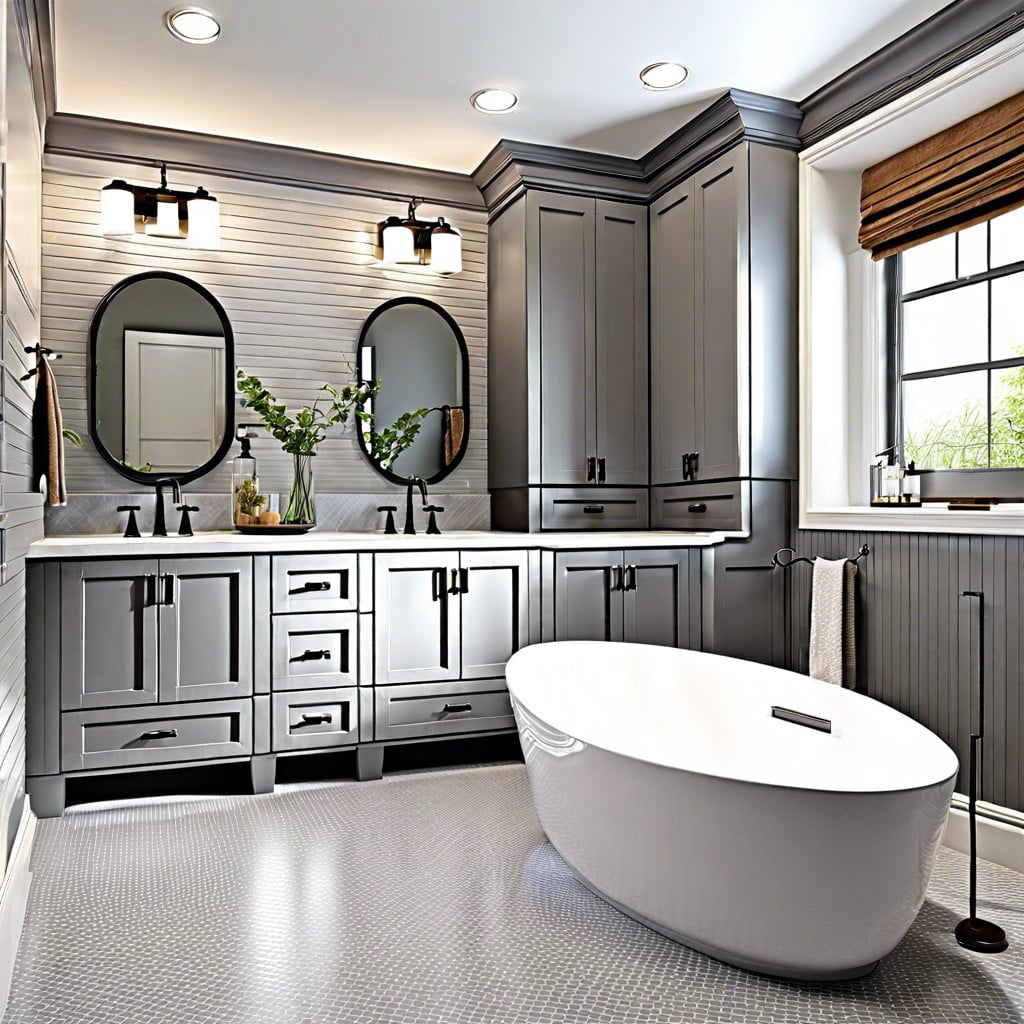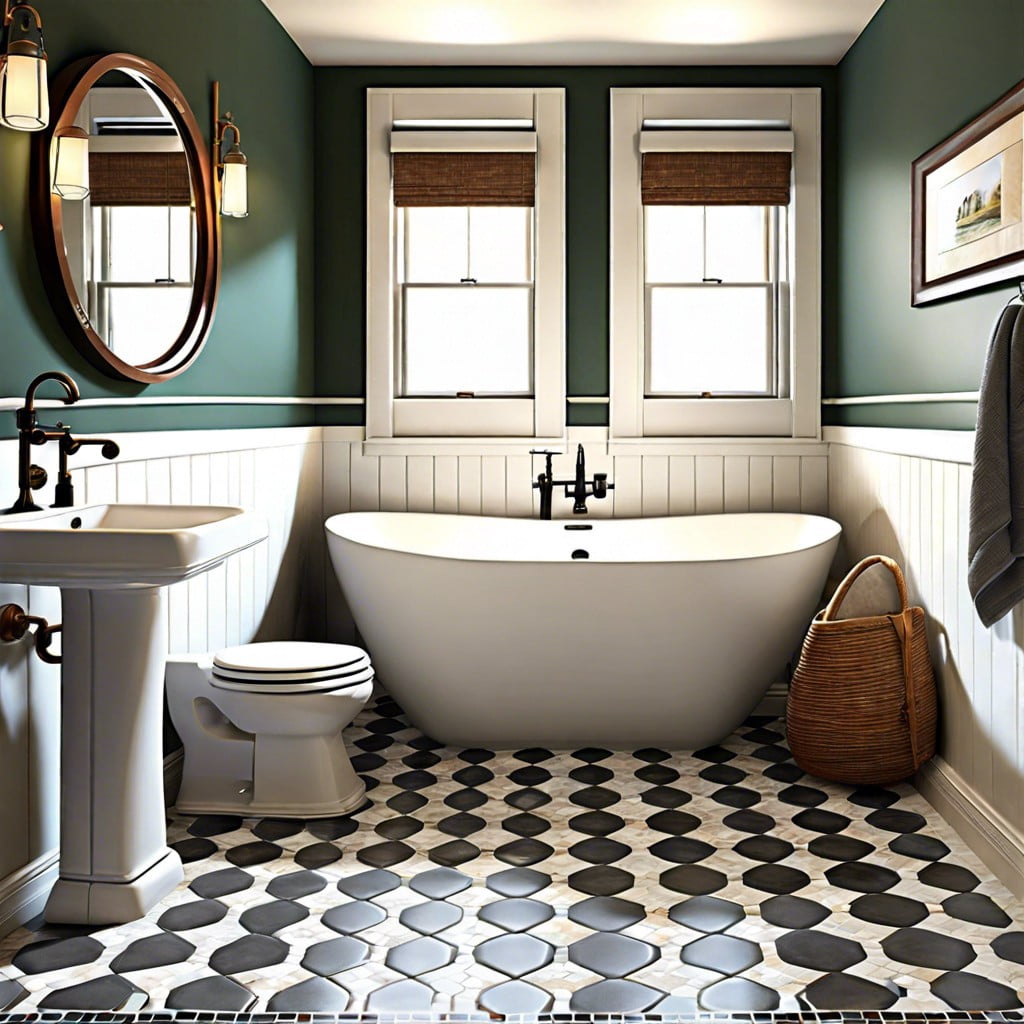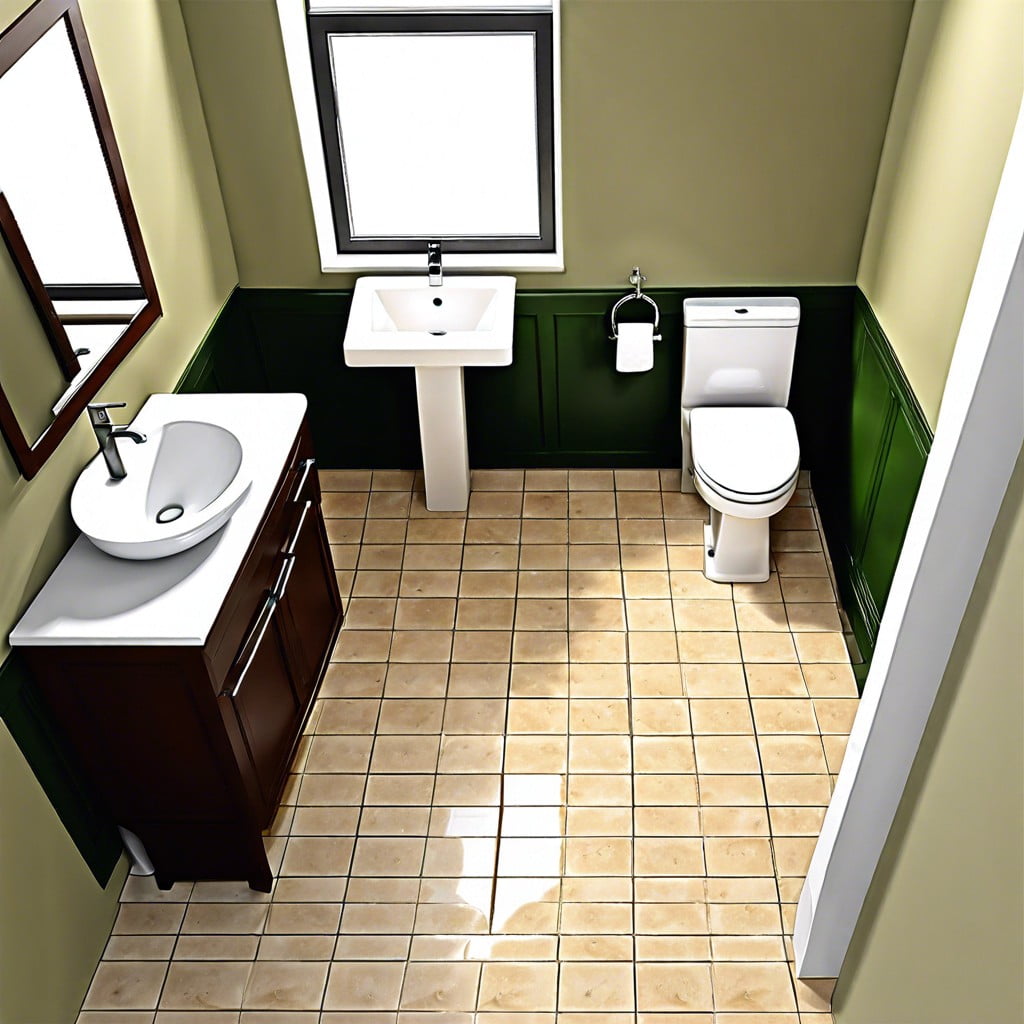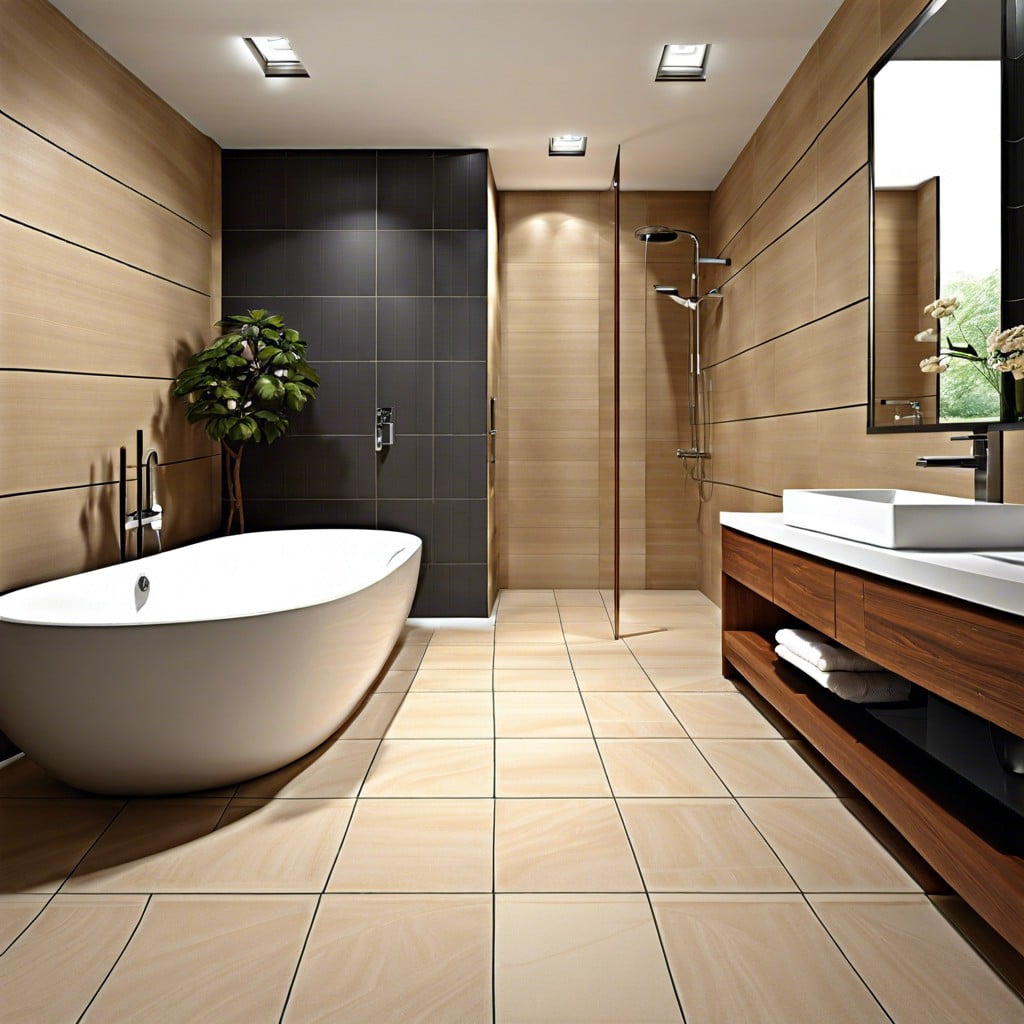Last updated on
Understand the ins and outs of bathroom vanity heights and how it impacts your bathroom’s functionality and aesthetics in this comprehensive guide.
Key takeaways:
- Traditional bathroom vanity height: 30-32 inches for accessibility.
- Comfort height vanities: 36 inches for ergonomic experience.
- Consider users’ height and needs when selecting vanity height.
- Adjust vanity height for vessel sinks and consider building codes.
- Prioritize practicality over aesthetics when selecting a bathroom vanity.
Standard Bathroom Vanity Height
Traditionally, bathroom vanities stood at a modest 30 to 32 inches in height. This was acceptable when average stature was smaller and ergonomic design wasn’t the buzzword it is today. The logic was simple; it catered to the broadest range of users, ensuring that children and adults alike could access the sink and countertop with relative ease.
What’s seldom acknowledged, however, is that this ‘one-size-fits-all’ approach actually fits very few perfectly. It requires most adults to stoop slightly, a motion that, over time, can contribute to back strain. The design norm of the past is not the de-facto choice for modern bathrooms, and with good reason – comfort and functionality should reign supreme in bathroom design.
Comfort Height
When discussing comfort height vanities, think of kitchen counters, which typically stand at 36 inches. This elevation aligns closely with the average person’s waist level, fostering a more ergonomic experience while minimizing strain on the back and neck. Noteworthy, it’s akin to the height of vanities you’d find in ADA-compliant bathrooms, emphasizing accessibility and ease of use.
This option particularly caters to taller individuals, for whom a lower vanity could necessitate uncomfortable bending. It also offers a concealed benefit for parents: the additional height can keep inquisitive toddlers at bay from the sink’s contents, albeit it may require a step stool for younger children to reach the basin.
It’s important to gauge personal preference and the physical needs of household members when considering this vanity height. These considerations ensure that the vanity height contributes positively to the daily functionality of the bathroom.
Optimal Bathroom Vanity Height for Your Space
The size of the users matters most when selecting the right vanity height for your space. Typically, a vanity at hip height, around 30-34 inches, caters well to the average adult, promoting ease of use and good posture. Variability in these measurements can accommodate users of differing heights comfortably, minimizing strain on the back and neck.
For households with children, consider a step stool or a built-in pull-out step to ensure the vanity remains functional for all family members. Moreover, if the bathroom is to be used by individuals with accessibility needs, adherence to ADA guidelines suggests a vanity height of 34 inches with clear floor space underneath to accommodate a wheelchair.
Similarly, storage needs can influence the vanity height. More vertical vanity cabinets may offer additional storage, but remember, the higher the storage, the less accessible it might become.
Think about future-proofing the space, especially if you plan on aging in place or selling your house down the line. Adjustable or modular vanities can offer an elegant solution to this, ensuring that the bathroom vanity can adapt to changing needs over time.
Vanity Height for a Vessel Sink
Selecting the right vanity height when incorporating a vessel sink is pivotal to maintain functionality and aesthetics. Vessel sinks add a striking visual element but significantly alter the height dynamics.
Here’s what you need to know:
- Lower the Vanity: Since vessel sinks sit on top of the counter rather than being recessed, the vanity should be lower to compensate. The typical vessel sink is around 5 to 6 inches in height, so subtract this from the usual vanity height to avoid an awkwardly tall setup.
- Ergonomics First: Consider who will be using the sink – children, adults, or individuals with disabilities. The goal is to minimize strain, so tailor the height to the users. A lower vanity, around 30 inches before the vessel sink is added, can be a starting point.
- Counter Thickness Counts: Factor in the counter’s thickness. Thicker countertops will add height, requiring you to further adjust the vanity to achieve the desired final level.
- Faucet Interaction: The height and reach of the faucet you choose can also impact comfort. Ensure the faucet isn’t too tall or too short for the vessel sink to avoid splashing and facilitate ease of use.
- Building Codes: Be mindful of building codes and ADA guidelines if applicable. They may influence the minimum or maximum height allowed for a vanity setup in your area, especially for public or commercial spaces.
By meticulously considering these aspects, the vessel sink can marry style with functionality, proving that chic design does not have to forsake comfort.
Things To Keep In Mind Before Purchasing A Bathroom Vanity
When you’re gearing up to select a bathroom vanity, it’s crucial not to let aesthetics overpower practicality. The user’s height should guide your choice: a vanity too tall or too short can result in uncomfortable daily use.
Don’t overlook plumbing fixtures and their locations either; mismatches can require costly adjustments. Storage needs warrant attention, as inadequate space leads to cluttered counters.
In homes with children, consider a vanity that accommodates growth or features adjustable height for adaptability. Lastly, ensure there’s enough clearance for doors and drawers to open without obstruction, preserving functionality and flow in your bathroom.
FAQ
What is standard height for bathroom vanity?
The standard height for a bathroom vanity typically falls between 30 and 34 inches, with the universal average being at 34 inches.
What is the height of a luxury bathroom vanity?
The height of a luxury bathroom vanity typically ranges around 36 inches, echoing the dimension of kitchen countertops for a modern look and supplementary storage.
What is the legal height for a vanity?
The legal height for a vanity, considering a standard bathroom bench height and a top-mounted bowl, would be approximately 775mm.
What is the full height of a bathroom vanity?
The standard height for a bathroom vanity typically ranges between 850 to 900 millimetres in Australia and New Zealand, however, the sink height is deemed to be more crucial.
Is there a recommended height for children’s bathroom vanity?
Yes, the recommended height for a children’s bathroom vanity is typically between 30 to 32 inches.
What is the optimal height for a wheelchair-accessible bathroom vanity?
The optimal height for a wheelchair-accessible bathroom vanity is 34 inches or less from the floor to the countertop.
Has the common height for bathroom vanities changed over the past decades?
Yes, the common height for bathroom vanities has gradually increased from the traditional 30-32 inches to a more comfortable 36 inches over the past decades.
Recap





